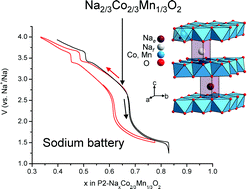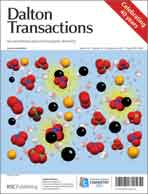The P2-Na2/3Co2/3Mn1/3O2 phase: structure, physical properties and electrochemical behavior as positive electrode in sodium battery
Abstract
Manganese substituted sodium cobaltate, Na2/3Co2/3Mn1/3O2, with a layered hexagonal structure (P2-type) was obtained by a co-precipitation method followed by a heat treatment at 950 °C.

- This article is part of the themed collection: Celebrating 50 years of Dalton Transactions: Our Top 50

 Please wait while we load your content...
Please wait while we load your content...